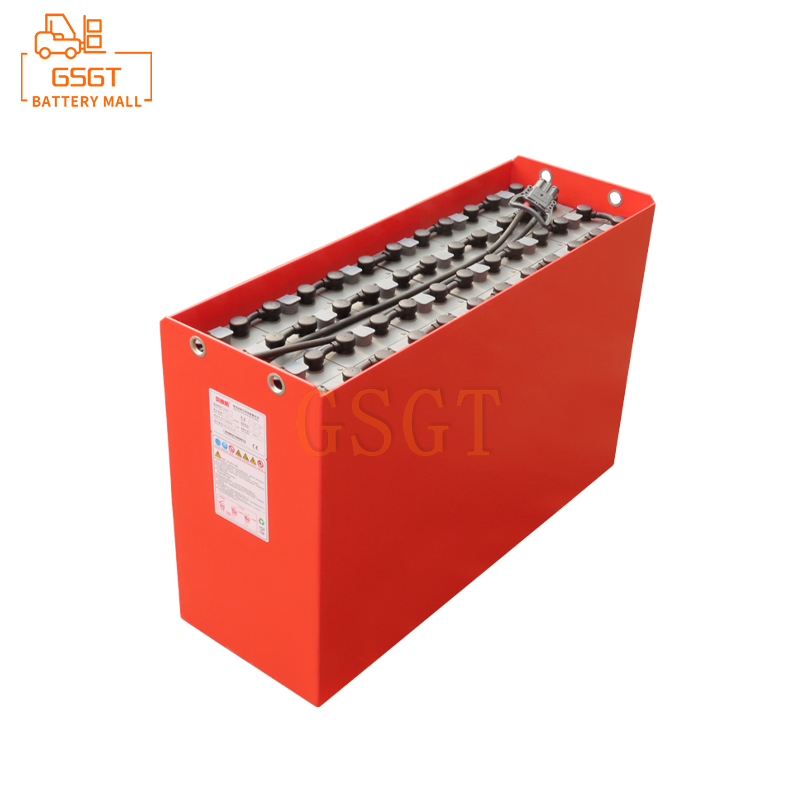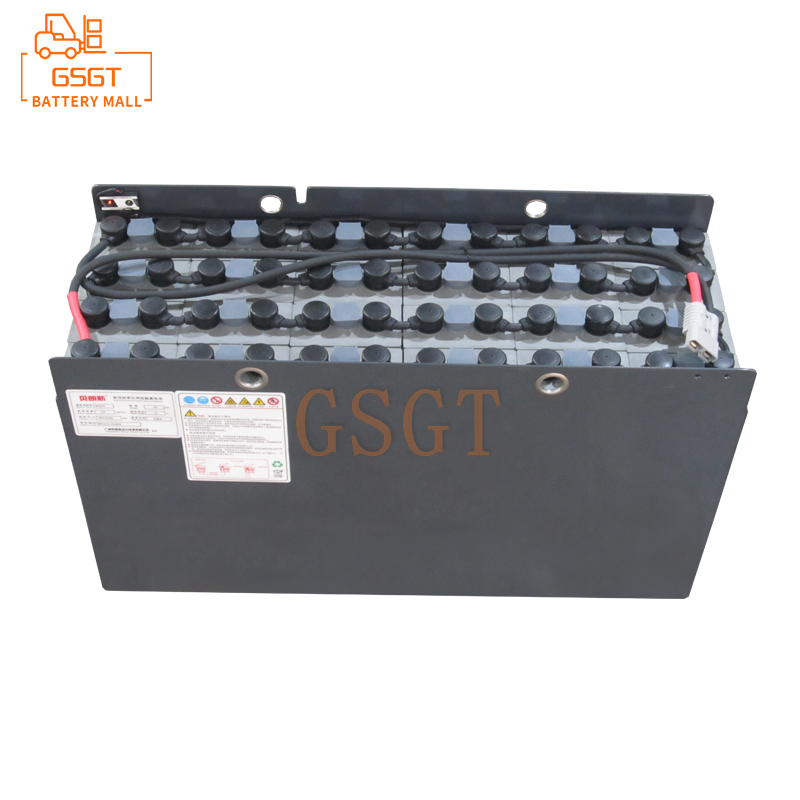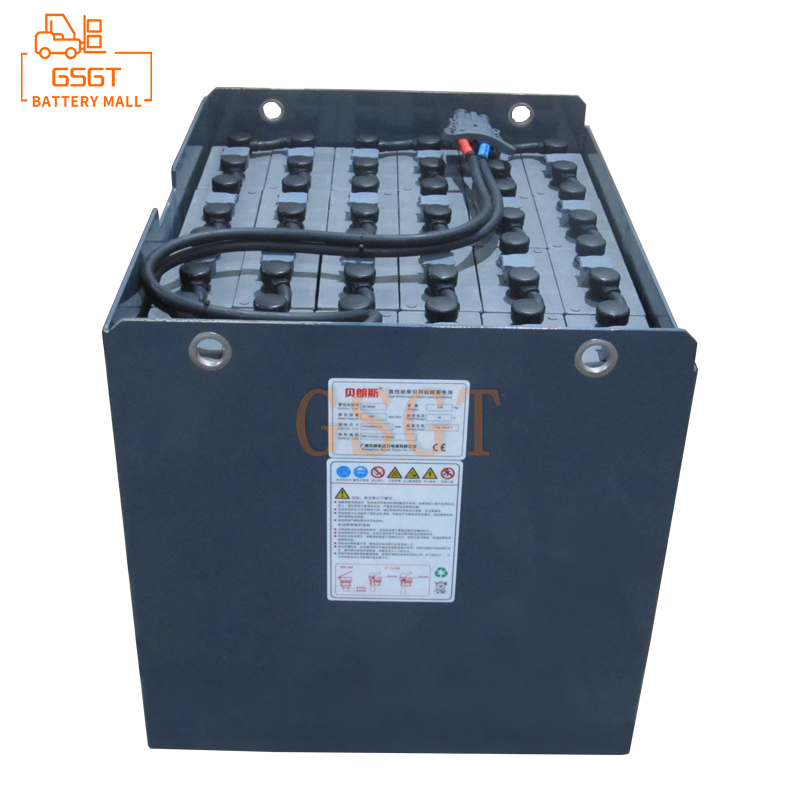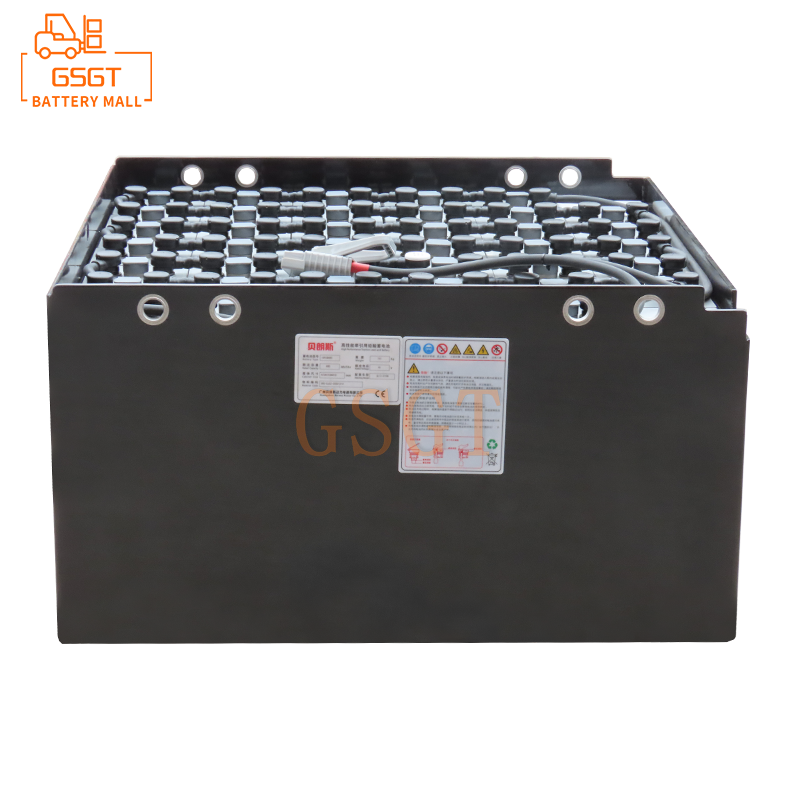Time:2025-06-05 11:57:20
Browse:606
In the modern logistics and warehousing industry, forklifts have become indispensable important equipment due to their efficient cargo handling capabilities. As the core power source of electric forklifts, the performance and safety of lead-acid batteries are directly related to the normal operation and working efficiency of the forklifts. However, during the use of lead-acid batteries, charging heat generation is a relatively common problem. If not handled properly, it will not only affect the service life of the battery but also may cause serious safety hazards. This article will deeply analyze the potential hidden dangers of overheating during the charging of lead-acid batteries in forklifts and propose practical and feasible solutions, providing references for ensuring the safe and efficient operation of forklifts.
1. The main reasons for the heating of lead-acid batteries in forklifts during charging
(1) Excessive charging current
During the charging process of forklift lead-acid batteries, the magnitude of the charging current has a direct impact on the battery's performance and heat generation. When the charging current exceeds the rated charging current of the battery, the chemical reactions inside the battery will accelerate, generating excessive heat. For instance, some enterprises, in an attempt to shorten the charging time, unilaterally increase the output current of the charger. Although this can accelerate the charging speed to a certain extent, this overloaded charging method will cause excessive polarization of the battery plates, leading to a sharp rise in the temperature of the electrolyte and thus causing the battery to heat up. In addition, excessive charging current will also accelerate the sulfation of the battery plates and shorten the battery's service life.
(2) Electrolyte issues
The electrolyte is an important medium for chemical reactions in lead-acid batteries, and its state is crucial to the battery's performance and heat generation. On the one hand, insufficient electrolyte will cause the battery plates to be exposed to the air, leading to local overheating of the plates and subsequently causing the battery to heat up as a whole. The main reasons for insufficient electrolyte include natural evaporation during long-term use and electrolyte leakage caused by poor battery sealing. On the other hand, uneven density of the electrolyte can also affect the charging and discharging performance of the battery, causing inconsistent chemical reactions in various parts of the battery and resulting in local overheating. For instance, when adding distilled water or supplementary liquid, if the operation is improper and the mixture is not stirred thoroughly and evenly, it will cause the density of the electrolyte to stratify, affecting the normal operation of the battery.
(3) Poor heat dissipation
Good heat dissipation is one of the key factors to ensure the normal operation of lead-acid batteries. During the operation of forklifts, batteries are usually installed in relatively enclosed Spaces. If the ventilation conditions in this space are poor, the heat generated by the battery during the charging process cannot be dissipated in time, resulting in heat accumulation and a continuous rise in battery temperature. In addition, the accumulation of dust and debris on the battery surface can also affect the heat dissipation effect.
(4) Battery aging and malfunction
As the usage time increases, lead-acid batteries will gradually age, and the internal components such as plates and separators will suffer varying degrees of damage. For instance, issues such as plate sulfation and separator perforation can lead to an increase in the internal resistance of the battery, generating more heat during the charging process. In addition, faults such as loose connection lines and poor contact inside the battery can also increase the resistance of the circuit, causing overheating. These aging and malfunction issues not only cause the battery to heat up during charging, but also seriously affect the battery's charging and discharging performance, reducing its service life.
2. Potential Hazards Caused by Overheating during the charging of lead-acid Batteries in Forklifts
(1) Shortened battery life
Continuous charging and heat generation will accelerate the aging and damage of various components inside the battery. Excessively high temperatures will intensify the evaporation of the electrolyte, leading to an increase in the electrolyte concentration and accelerating the sulfation process of the plates. At the same time, high temperatures can also cause the active substances on the plates to fall off, reducing the effective area of the plates and thereby affecting the charging and discharging performance of the battery. Batteries that remain in a heating state for a long time will have a significantly shortened service life. Enterprises need to frequently replace the batteries, which increases operating costs.
(2) Increased safety risks
When the charging heat is severe, it may cause serious safety accidents such as battery explosion and fire. When the internal temperature of a battery is too high and exceeds its tolerance limit, the gas inside the battery cannot be discharged in time, which will cause a sharp increase in the internal pressure of the battery. Eventually, it may lead to the rupture and explosion of the battery casing. In addition, high temperatures can also cause flammable substances such as the electrolyte and plastic components inside the battery to reach their ignition points. Once exposed to a fire source, it will trigger a fire, posing a great threat to the safety of personnel and equipment.
(3) Reduced work efficiency
Due to the heat generated during charging, which can affect the performance and service life of the battery, forklifts may experience insufficient power and shortened driving range during operation, resulting in reduced operational efficiency. For instance, forklifts that could operate continuously for several hours may need to be charged more frequently due to battery heating issues, thereby reducing actual working time, affecting the efficiency of goods handling and storage, and bringing adverse effects to the production and operation of enterprises.
3. Solutions to the Heating Problem of Lead-Acid Batteries in ForkLifts during Charging
(1) Control the charging current reasonably
Enterprises should strictly follow the battery's user manual to select the appropriate charger and set a reasonable charging current. Generally speaking, the charging current of lead-acid batteries should be controlled at about 10% to 15% of their rated capacity. During the charging process, a phased charging method can be adopted. That is, a large current is used for rapid charging first. When the battery power reaches a certain level, the charging current is reduced for trickle charging. This way, not only can the charging speed be ensured, but also the battery overheating caused by excessive charging current can be avoided. In addition, chargers with intelligent charging functions can also be used. Such chargers can automatically adjust the charging current according to the actual state of the battery, ensuring the safety and efficiency of the charging process.
(2) Regularly inspect and maintain the electrolyte
Regularly check the electrolyte level: Enterprises should establish strict battery maintenance systems and regularly check the height of the electrolyte level. When insufficient electrolyte is found, distilled water or special lead-acid battery replenishment fluid should be added in time. It should be noted that when adding liquid, tap water should be avoided as it contains various impurities that can affect the performance of the electrolyte. Meanwhile, the amount of liquid added should be moderate, just enough to reach the scale line on the battery plates.
Ensure uniform density of the electrolyte: After adding distilled water or supplementary liquid, the electrolyte should be thoroughly stirred to make its density uniform. In addition, the density of the electrolyte can be measured regularly using a hydrometer, and the composition of the electrolyte can be adjusted according to the measurement results. Generally speaking, the density of the electrolyte in lead-acid batteries should be between 1.28 and 1.30g/cm³. The density of the electrolyte may vary among different models and specifications of batteries. The specific density should be based on the battery's user manual.
(3) Improve the battery's heat dissipation conditions
Optimize the battery installation environment: When designing the installation location for forklift batteries, ventilation and heat dissipation issues should be fully considered. Ventilation holes or ducts can be set up in the battery installation space to ensure smooth air circulation and promptly remove the heat generated during the battery charging process. At the same time, the battery should be avoided from being installed near heat sources, such as near the engine.
Regularly clean the battery surface: Enterprises should regularly arrange personnel to clean the battery surface, remove dust, debris, etc., to keep the battery surface clean. You can wipe the battery surface with a clean damp cloth. Avoid using cleaning products such as organic solvents that may damage the battery casing. In addition, it is necessary to check whether the battery casing has any damage, cracks or other conditions. If there are any problems, they should be repaired or replaced in time.
(4) Deal with battery aging and malfunction issues in a timely manner
Establish a regular battery inspection system: Enterprises should establish a complete regular battery inspection system and conduct comprehensive inspections on lead-acid batteries on a regular basis, including parameters such as battery voltage, capacity, and internal resistance. Through detection, the aging and malfunction problems of the battery can be discovered in a timely manner, and corresponding measures can be taken to deal with them.
Replace aged batteries in a timely manner: For batteries that have severely aged and cannot be repaired, they should be replaced promptly to prevent the continued use of batteries with potential safety hazards. When replacing the battery, reliable quality battery products that match the forklift model should be selected, and installation and debugging should be carried out strictly in accordance with the operating procedures to ensure that the new battery can work normally.
(5) Strengthen the training of operators
The operation norms and maintenance awareness of the operators have a significant impact on the normal use and lifespan of the battery. Enterprises should enhance the training of forklift operators, enabling them to be familiar with the working principle, performance characteristics, as well as the correct usage and maintenance methods of lead-acid batteries. By enhancing the professional skills and safety awareness of operators, the problem of battery heating during charging caused by improper operation can be effectively reduced, and the service life of batteries can be prolonged.
4. Conclusion
The problem of heating during the charging of lead-acid batteries in forklifts is a complex issue involving multiple factors, and the potential hazards it brings cannot be ignored. By conducting an in-depth analysis of the causes of battery heating during charging and adopting a series of targeted solutions such as reasonably controlling the charging current, regularly inspecting and maintaining the electrolyte, improving the battery's heat dissipation conditions, promptly addressing battery aging and malfunction issues, and strengthening the training of operators, the risk of battery heating during charging can be effectively reduced, the battery's service life can be prolonged, and the safe and efficient operation of forklifts can be ensured. In practical applications, enterprises should attach great importance to the maintenance and management of batteries, combine preventive measures with daily maintenance, continuously improve the performance and safety of forklifts, and create greater value for the production and operation of enterprises.

$2290

$1630

$3050

$5710

MESSAGE
Professional And Efficient
Security
Affordable Price
Professional Services